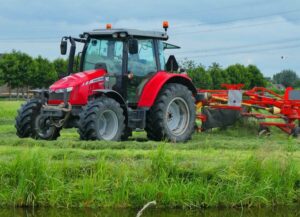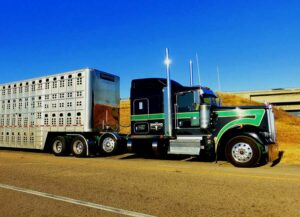Fernando Díaz
In order to improve cow welfare in dairy farms, Canadian researchers conducted a welfare assessment in 250 Holstein dairies from Ontario, Alberta, and Quebec. Minimum herd size consisted of 40 milking cows and the facilities were tie-stall (50%) and free-stall (50%) barns with no access to outdoor pastures.
The assessment included 13 critical areas grouped in three categories:
- Housing: stall dimensions, space allowance at stalls and feedbunks, stall and pen management, milking center, and transfer alleys.
- Feed: body condition scoring and nutrition.
- Welfare: injuries, lameness, lying time, and hoof health.
At the end of the assessment, the researchers provided an evaluation report to each producer and discussed with them the main strengths and areas for improvement that would increase cow welfare on their farm. After 8 to 12 months of the cow welfare evaluation, the investigators followed-up with 118 producers by a phone interview to see whether they made any change to improve cow welfare after the welfare assessment. At this time, the researchers focused only in three critical areas: stall design, stall management, and hoof health.
The survey results were published recently in Canadian Journal of Animal Science (Nash et al., 2019). These were the main observations:
- 72.0% of the producers reported they implemented a change at least in one of the three critical areas.
- Of the producers who made changes, 70.6% of them identified the welfare assessment as the main reason to make that change.
- 37.3% of the producers implemented changes to stall management (amount of bedding, type of bedding, stall cleaning or stall base).
- 28.8% of them changed stall design (neck rail placement, increased stall dimensions, change lunge space or build a new barn).
- Hoof health protocols were modified by 27.1% of the producers (trimming frequency, footbath frequency, lameness monitoring or record keeping).
Moreover, the most commonly barriers to those producers who reported they made no changes were:
- Lack of funds (52.9% of the producers).
- Lack of time (38.7%).
- Already being satisfied with the cow welfare at the farm (31.1%).
- No help (19.5%) or too complex (17.8%).
- Not profitable (11.9%) or not benefit (6.8%).
- Indifferent (5%).
- Building a new barn (5%).
In conclusion, conducting welfare assessments could motivate dairy producers to change facility design or management practices directed to improve cow welfare. However, it is important to follow-up with them to be sure the suggested recommendations are implemented.
Despite cow welfare is one of the most important issues in dairy farms, a high proportion of farmers did not have the budget or time to make the improvements.
References
Nash, C.G.R., D.F. Kelton, E. Vasseur, T.J. DeVries, D. Parent, D. Pellerin, K. Carrier, E.A. Pajor, J. Rushen, A.M. de Passillé, J.B. Coe, and D.B. Haley. 2019. A survey of practices implemented to improve cow comfort following an initial assessment on Canadian dairy farms. Can. J. Anim. Sci. 99: 107–115.











